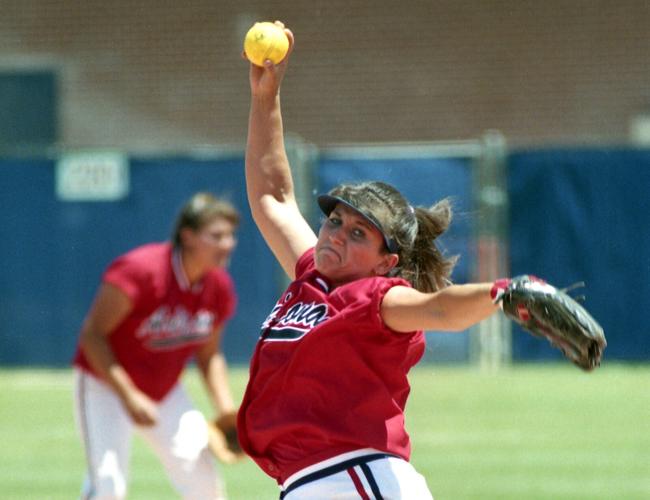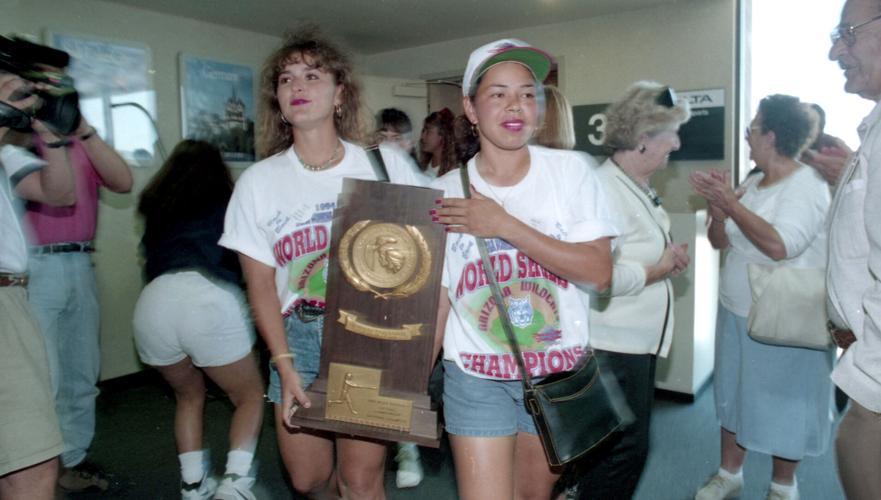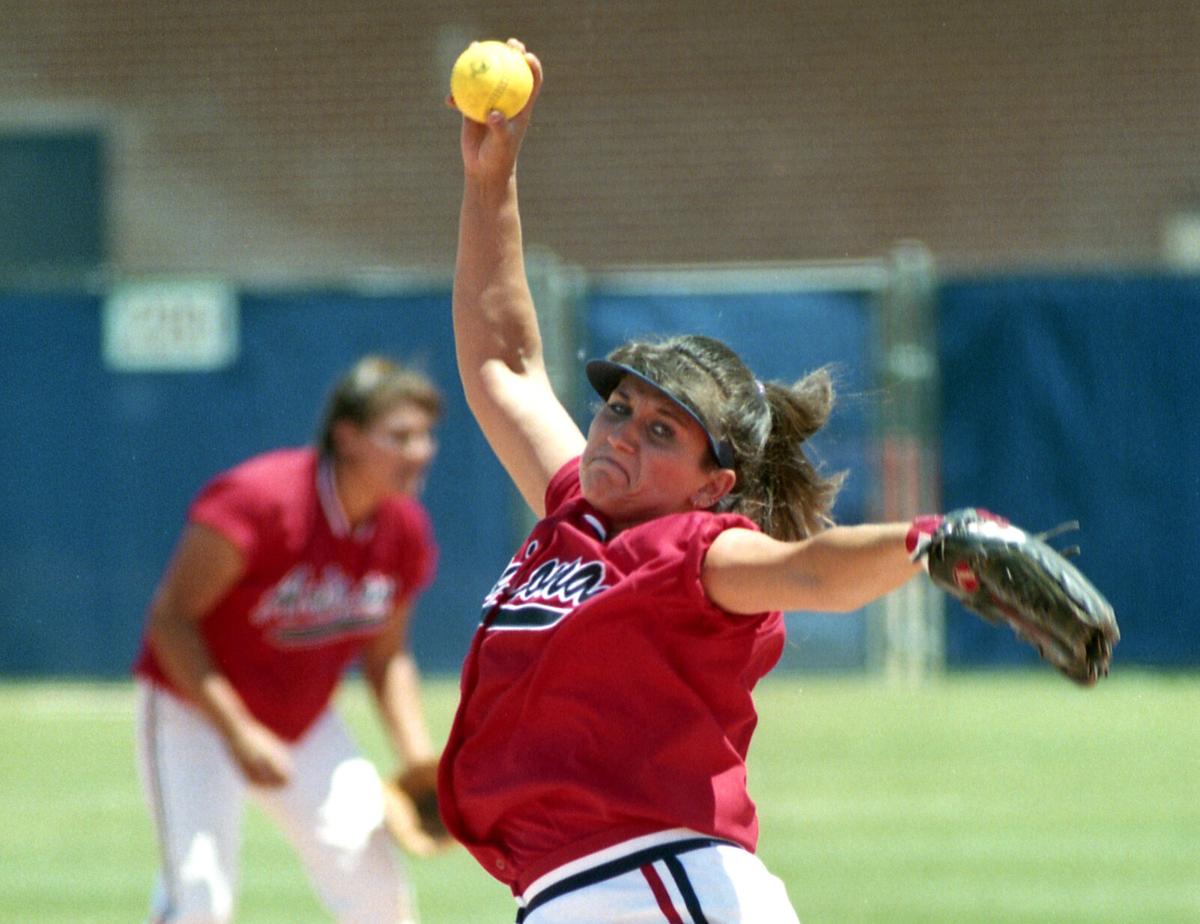Two days before Arizona opened the 1994 softball season, ninth-year coach Mike Candrea didn’t dodge the expectations.
“I can’t remember a year when I was so impressed with us, one through nine in the lineup,’’ he said.
The Wildcats then opened the season with 27 consecutive victories.
By early May, after a 19-game winning streak, Arizona set a Pac-12 record with a 23-1 conference record. Its only losses in the regular season were to No. 7 Fresno State, No. 10 Washington and No. 13 UNLV.

There would be no losses in a perfect postseason. The Wildcats went 7-0, outscoring opponents 38-2 to win a third NCAA championship and finish the year 64-3.
As if on cue, Candrea produced T-shirts that said “Back to Back’’ as his team celebrated its title victory over third-ranked Cal State Northridge in Oklahoma City.
“Man, I thought the Yankees had a tough lineup,’’ said Northridge coach Gary Torgeson. “These are the Tucson Bombers.’’
The ’94 Wildcats were so dominant that six players were selected first-team All-Americans: catcher Leah Braatz, first baseman Amy Chellevold, second baseman Jenny Dalton, shortstop Laura Espinoza, outfielder-pitcher Leah O’Brien and pitcher Susie Parra, who was an incredible 33-1.

The UA softball team returns to Tucson with the NCAA championship trophy on May 31, 1994.
“Susie is our God,’’ said third baseman Susie Duarte, one of the nation’s leading defensive players.
Parra had gone 28-3 a year earlier but exceeded that as a senior, winning the Honda Award as the best player in college softball.
Said Candrea: “It was such a fun year to the point I don’t want it to end. I’ve never had a team I enjoyed so darn much because of their work ethic, because of their attitude and because of their ability. When you put all of those things together, you have a dream.’’
In was indeed a dream season, as the Wildcats won their third NCAA championship in four years. The softball community began to compare Arizona’s program with that of once-untouchable UCLA, which had ruled the sport until Candrea was hired at Arizona in 1986.

Arizona went 64-3 in winning the 1994 softball national championship.
“I should probably retire,’’ said Candrea. “It’s not going to get any better than this — until we start next year.’’ (A year later Arizona went 66-6 and finished second to UCLA).
Arizona led the nation in six offensive categories in 1994. It had a team batting average of .380. Chellevold, the leadoff hitter, batted .504. Dalton, a sophomore, hit 16 home runs with a .434 batting average. Espinoza, the game’s leading power hitter of the 1990s, hit 30 homers with 95 RBIs in just 66 games. Braatz, a freshman catcher, hit 18 homers, and Evans, a freshman, hit .416 and also went 17-0 as the backup pitcher to Parra.
Candrea became the face of college softball in 1994. He later said the only three free weekends he had from October to the start of the 1995 season were Thanksgiving, Christmas and New Year’s.
“I was traveling around the country speaking at clinics literally every weekend,’’ he said. “What I’m most proud of is that we build a foundation of fans at Hillenbrand Stadium.’’
Hillenbrand, in its second season, was the top softball facility in the NCAA. Arizona averaged 1,132 fans. Attendance would soon more than double, as Arizona went on to win national titles in 1996 and 1997.








